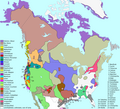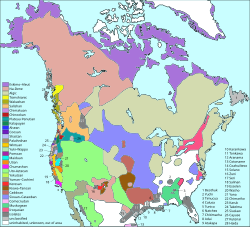
Sınaq göstərişi ölçüsü: 661 × 600 piksel. Digər ölçülər: 265 × 240 piksel | 529 × 480 piksel | 847 × 768 piksel | 1.129 × 1.024 piksel | 1.290 × 1.170 piksel.
Faylın orijinalı (1.290 × 1.170 piksel, fayl həcmi: 599 KB, MIME növü: image/png)
Faylın tarixçəsi
Faylın əvvəlki versiyasını görmək üçün gün/tarix bölməsindəki tarixlərə klikləyin.
| Tarix/Vaxt | Miniatür | Ölçülər | İstifadəçi | Şərh | |
|---|---|---|---|---|---|
| hal-hazırkı | 17:28, 20 iyul 2019 |  | 1.290 × 1.170 (599 KB) | Denniss | Reverted to version as of 21:52, 1 March 2009 (UTC) |
| 16:54, 13 iyul 2019 |  | 1.290 × 1.170 (840 KB) | Thylacinus cynocephalus | Having colonial borders on an indigenous language map is offensive | |
| 21:52, 1 mart 2009 |  | 1.290 × 1.170 (599 KB) | Malus Catulus | optipng, pngout | |
| 14:31, 22 dekabr 2006 |  | 1.290 × 1.170 (668 KB) | Mahahahaneapneap | pngcrushed | |
| 00:43, 11 noyabr 2006 |  | 1.290 × 1.170 (916 KB) | Ish ishwar | update | |
| 04:55, 1 aprel 2006 |  | 1.296 × 1.176 (678 KB) | Locke Cole | smaller file (pngout /f0 Langs_N.Amer.png /b4096) / Change: -315546 bytes ( 68% of original) | |
| 04:01, 7 yanvar 2006 |  | 1.296 × 1.176 (986 KB) | Ish ishwar | adai,chimariko = unclassified; adjust uto-aztec, salinan, southern athabasc., muskogean; + Isla Ángel de la Guarda, Isla del Tiburón, Lake Okeechobee | |
| 21:24, 9 dekabr 2005 |  | 1.318 × 1.195 (714 KB) | Ish ishwar | checker grid pattern to Chumash | |
| 06:12, 6 dekabr 2005 |  | 1.318 × 1.195 (714 KB) | Ish ishwar | forgot seri, fix fam key | |
| 01:21, 6 dekabr 2005 |  | 1.318 × 1.195 (712 KB) | Ish ishwar | update |
Faylın istifadəsi
Bu faylı istifadə edən səhifə yoxdur (digər layihələrdəki səhifələr göstərilmir).
Faylın qlobal istifadəsi
Bu fayl aşağıdakı vikilərdə istifadə olunur:
- azb.wikipedia.org layihəsində istifadəsi
- beta.wikiversity.org layihəsində istifadəsi
- ca.wikipedia.org layihəsində istifadəsi
- en.wikipedia.org layihəsində istifadəsi
- History of the Americas
- North America
- Native Americans in the United States
- First Nations in Canada
- Linguistics and the Book of Mormon
- Lower Rio Grande Valley
- User:Ish ishwar
- Classification of the Indigenous languages of the Americas
- Wikipedia:Featured pictures thumbs/03
- Indigenous peoples of the Americas
- Wikipedia:Wikipedia Signpost/2005-12-26/Features and admins
- Wikipedia:Featured picture candidates/December-2005
- Wikipedia:Featured picture candidates/Indigenous language families north of Mexico
- User:Cyde/Featured pictures
- Talk:New World
- Wikipedia:Picture of the day/April 2006
- Wikipedia:POTD/April 1, 2006
- Wikipedia:Picture of the day/April 1, 2006
- Wikipedia:Today's second feature/April 1, 2006
- Portal:North America/Selected picture
- User talk:Wapcaplet/Archive 3
- Wikipedia:POTD column/April 1, 2006
- Wikipedia:POTD row/April 1, 2006
- User talk:Ish ishwar/2005talkpage
- Talk:Indigenous peoples of the Americas/Archive 1
- Portal:Maps/Selected picture
- List of language families
- Portal:Maps/Selected picture/20
- Wikipedia:Featured pictures/Diagrams, drawings, and maps/Maps
- User:Carcharoth/Arctic articles
- Portal:North America/Selected picture/5
- User:North8000
- Wikipedia:Reference desk/Archives/Language/2010 March 2
- Caddo Lake State Park
- Former colonies and territories in Canada
- Portal:Indigenous peoples of the Americas
- Pacific Northwest languages
- Wikipedia:Reference desk/Archives/Humanities/2012 July 4
- Talk:Early Slavs/Archive 1
- Wikipedia:Wikipedia Signpost/2013-06-05/News and notes
- Wikipedia:Wikipedia Signpost/Single/2013-06-05
- Canadian folklore
- User:Joelton Ivson/Gather lists/24453 – Indígenas nas Américas
- Portal:Maps
- User:Jmjosh90/sandbox/Archives/2022/March
- Wikipedia:Wikipedia Signpost/Single/2005-12-26
- User:Falcaorib/Canada, United States and Mexico
Bu faylın qlobal istifadəsinə baxın.

